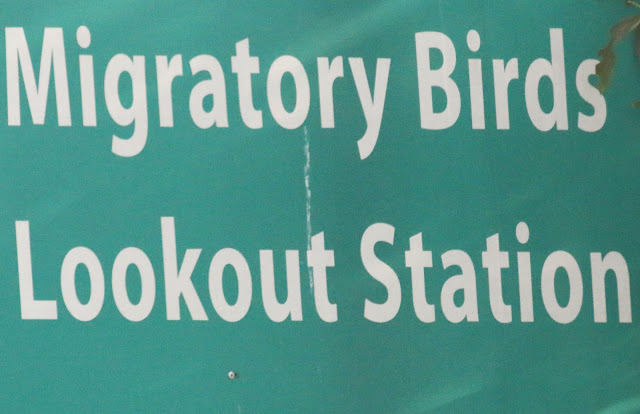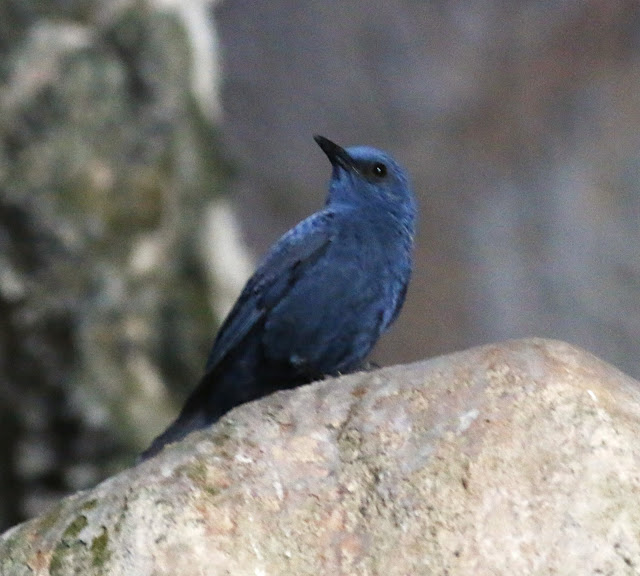My only interest in birds are with waders. It is probably because most of them are migrant birds, flying in as far as Sakhalin, East Asia etc and they have a variety of plumage to showcase and confuse birders at the same time. Also I believe that if you are sincere, authorities will know that you are a genuine birder and not any irresponsible person. Hence I am quite lucky in that position. I reached the survey site at around 8.30am and stayed until about 12.30pm.
I noticed that there are many changes in this site with probably only two reasonably large areas for the waders to roost. How long will this remain or will it gets worse we don't know what are their plans. The good news is that there are still many waders coming in here to roost and here are just some of them.
This is also considered a wader but a local one.
This is a Black-winged Stilt. You would often find them more in the paddy fields but over in the coastline of Selangor, they have moved to the mudflats.
Incoming waders after their feeding grounds are flooded by the rising tides.
They would not land immediately to roost. They would circle around as if to check the surrounding first.
As you have noticed, they are mostly Lesser Sand Plovers which make up the majority of the waders seen here.
Most of them have also not assume breeding plumage yet.
Once everything is clear, they will start to land one by one.
Here comes the bigger waders
Great Knots and a Bar-tailed Godwit. Remember this is only May - so most of them have not assume their breeding plumage yet.
Quite a sizeable Great Knot population can be seen here.
Whimbrels are also common in this region.
So are the Eurasian Curlews which numbers can go to a few thousands at this site in the early days.
Their long bills are distinguishable from a distance.
This Eurasian Curlew came quite close to where I stood.
Joining the waders are these Gull-billed Terns and some Whiskered Terns.
Selangor coastline is only place where you can be certain to see Gull-billed Terns. However, there were no Caspian Terns this time.
Occasionally when they sensed some danger like an overhead circling raptor or an eager birder who enter their comfort zone, they will take off again.
They would usually go one round and then return slightly further away but at times you will also find some of them flying away from the site. There might be other areas for them to roost during high tide.
These are mainly Common Red Shanks. They are the most common shanks you can find here.
Once they have settled down. It's time for us to get closer and try to look for any potential rare ones among them.
There were quite a number of Black-tailed Godwits seen this time.
The ideal thing for such situation would be a birder with a digiscope.
Usually the Red-necked Stints would occupy the front row in the group of smaller waders.
There are a couple of Ruddy Turnstones partially hidden in the middle of the photo below.
Could the one indicated be a Greater Sand Plover ? - differentiated by its larger body and eye size in the absence of its leg colors.
A Great Knot trying to mingle among the smaller waders.
A White-Winged Tern in full breeding plumage.
A Red Knot there in almost full breeding colors. There are not many Red Knots in this region as compared to Great Knots. That does not meant that the species is rare because in some places, their numbers can be quite high.
As the sun gets higher the photo dynamics changes.
Here you can see a lone Ruddy Turnstone among the other waders.
Some Terek Sandpipers can also be seen now.
Here it is again ! More expose now that the other waders flew away. It must be rumbling something.
Red Knot
Hmm, will my wife recognise me when I get back?
Nordman's Greenshanks !
A Red-necked Stint in partial breeding plumage. Remember again it's only May.
In this a RNS or a Little Stint ? - I wonder
Aside from rare waders we should also look out for unusual occurrence / features like these ones.
A Red-necked Stint with split bill.
A Red-necked Stint I believe
A RNS with a very short blunt bill.
Who could it be?
A Lesser Sand Plover (LSP) with a hooked bill.
A LSP with a white looking face.
Finally I managed to photographed my "bogey bird" !
A Little Stint in the middle there.
Little Stint - expert has identified it for me so there wasn't any disputes arising.
You can clearly see its double supercilium and rounder head structure.
I went home happily ever after.
THAT'S ALL FROM KAPAR !
THANKS TO ALL WHO HAVE SUPPORTED MY SURVEY AND JOURNEY.


























































